
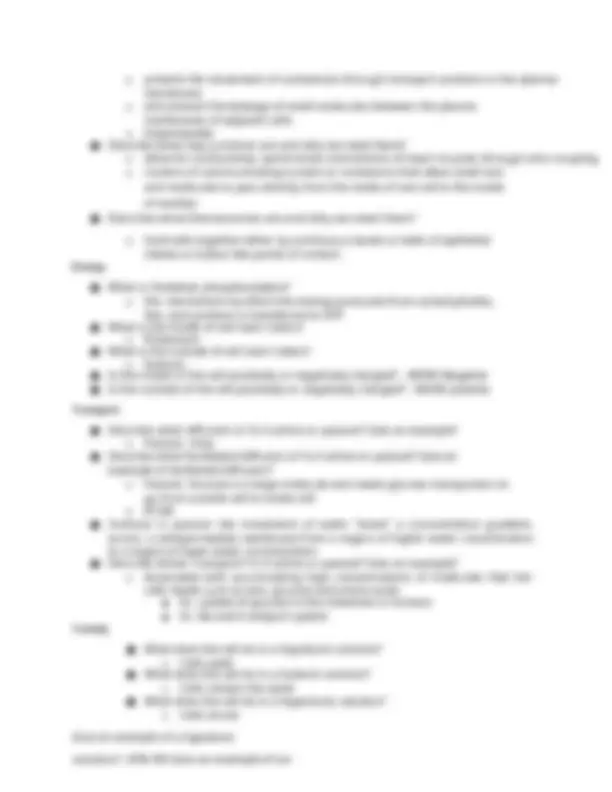

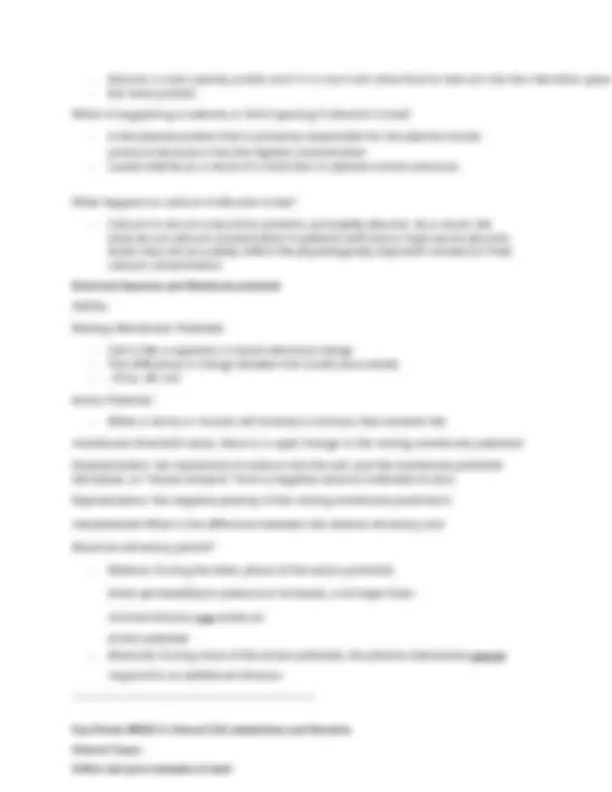
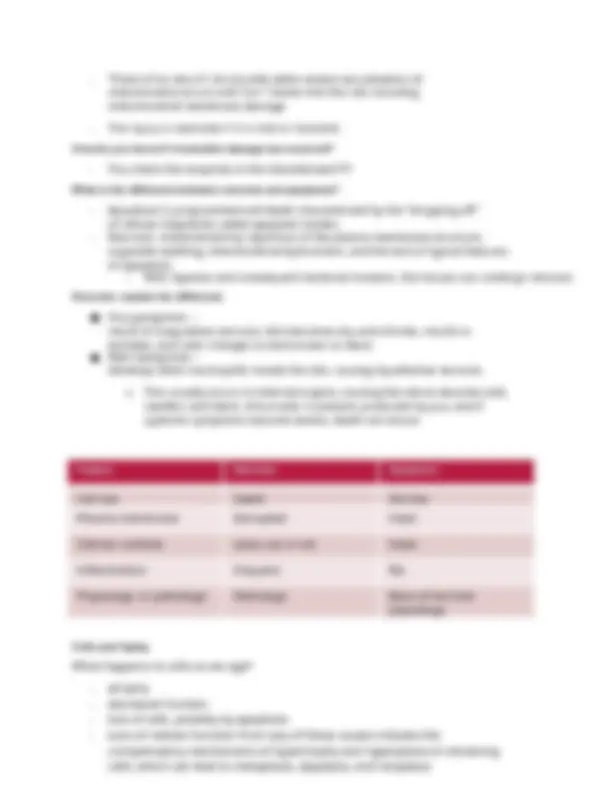
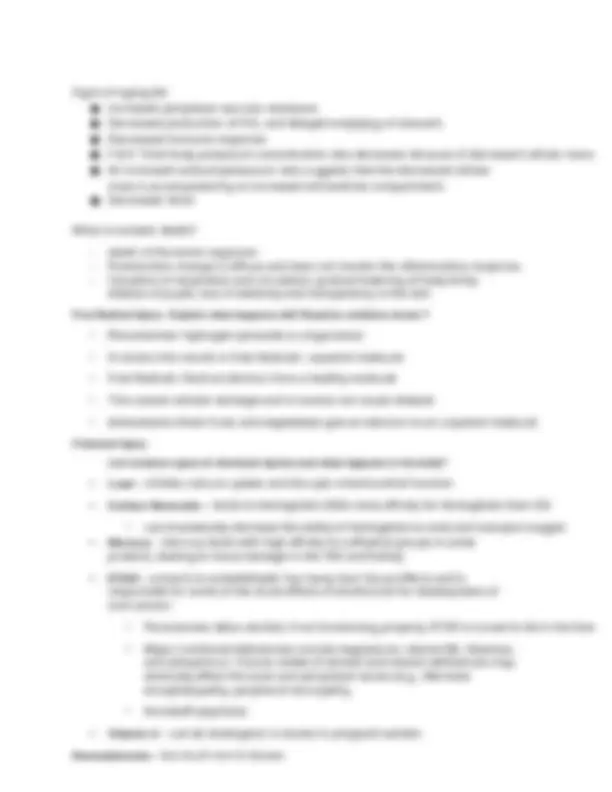


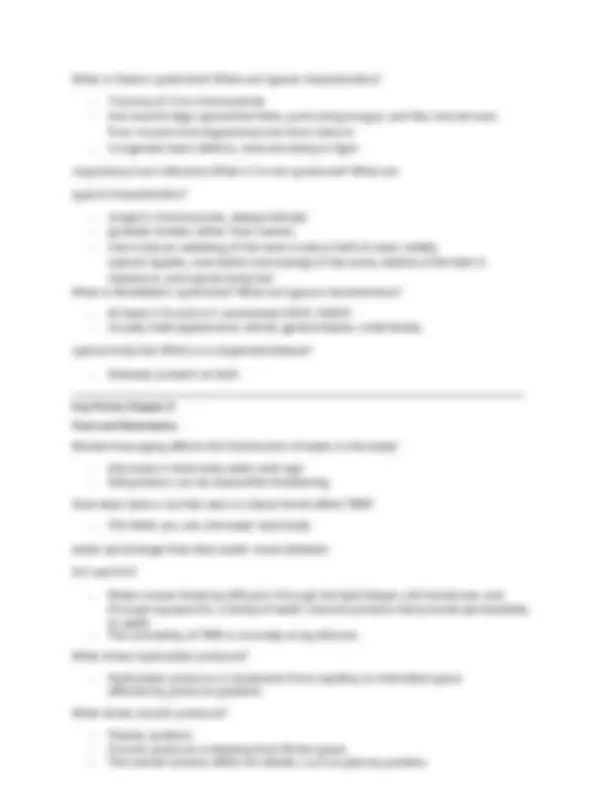

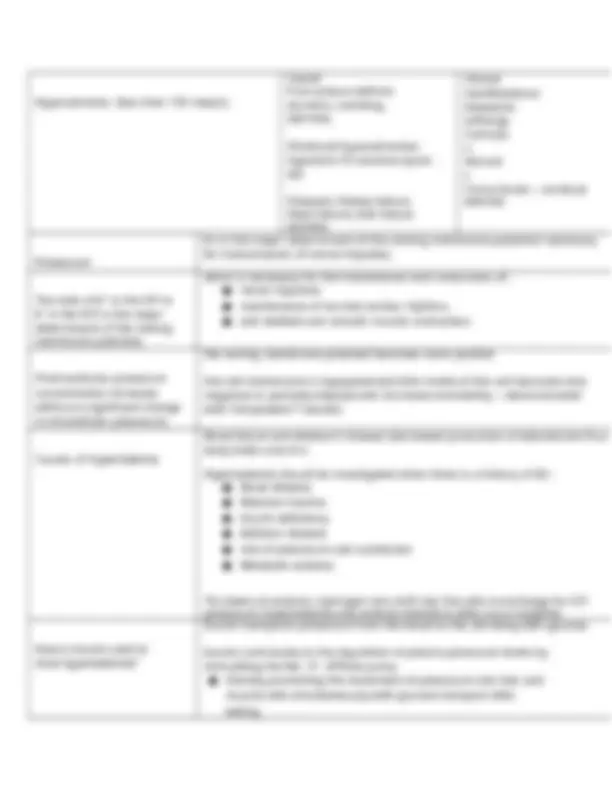

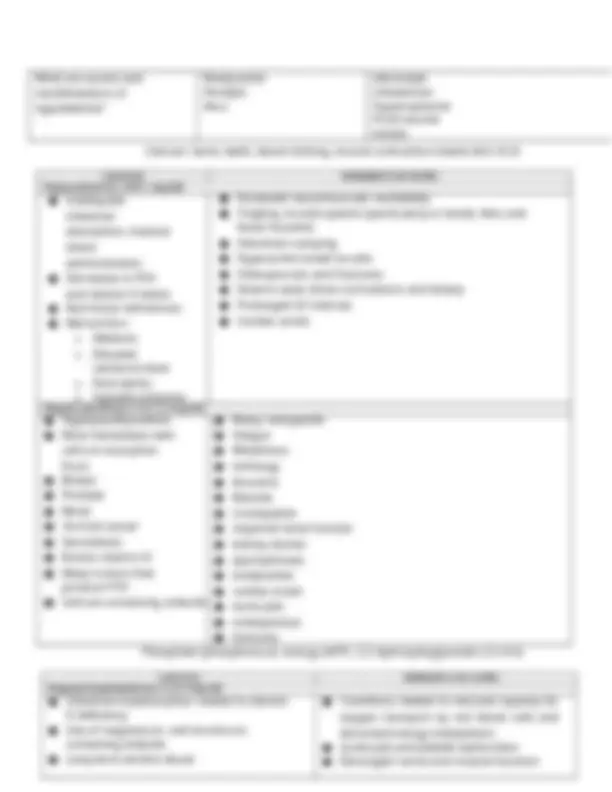
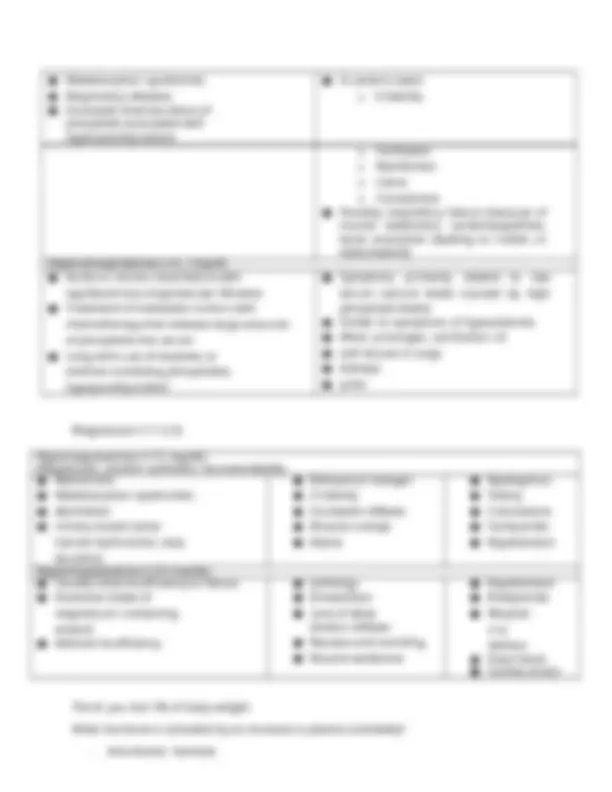

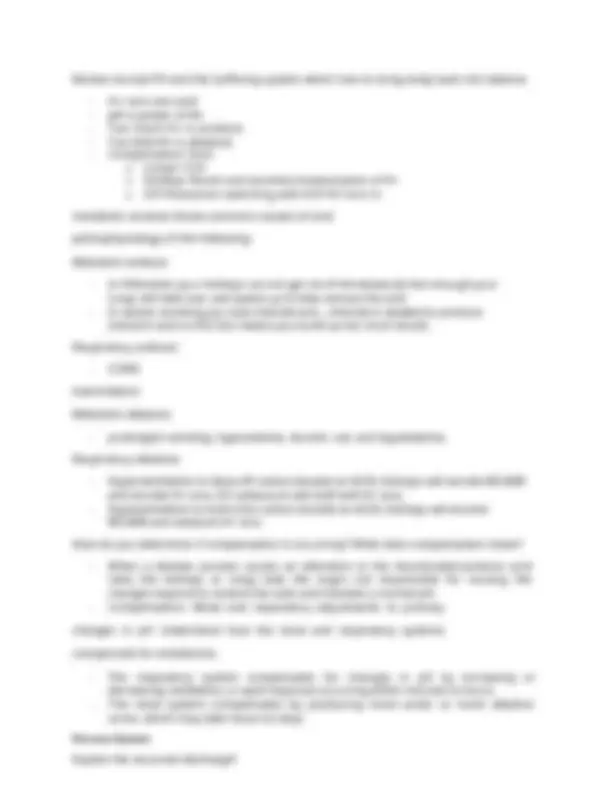

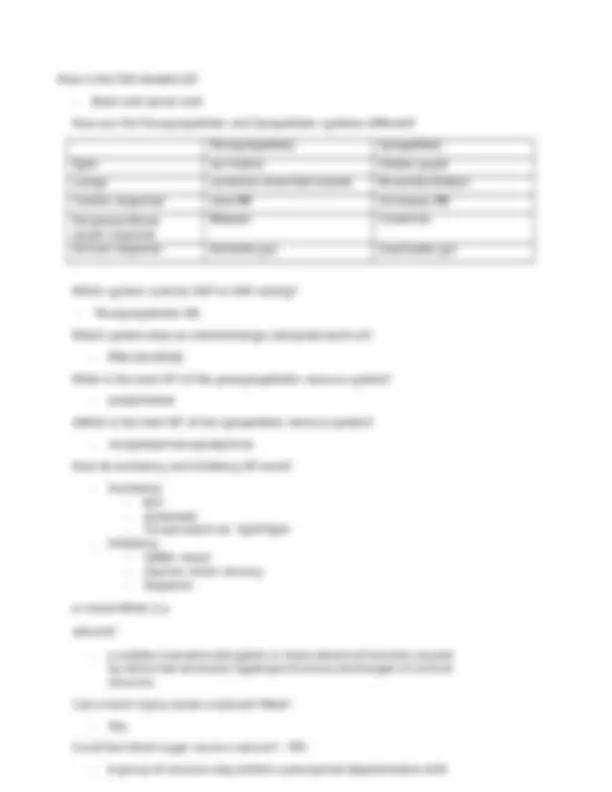

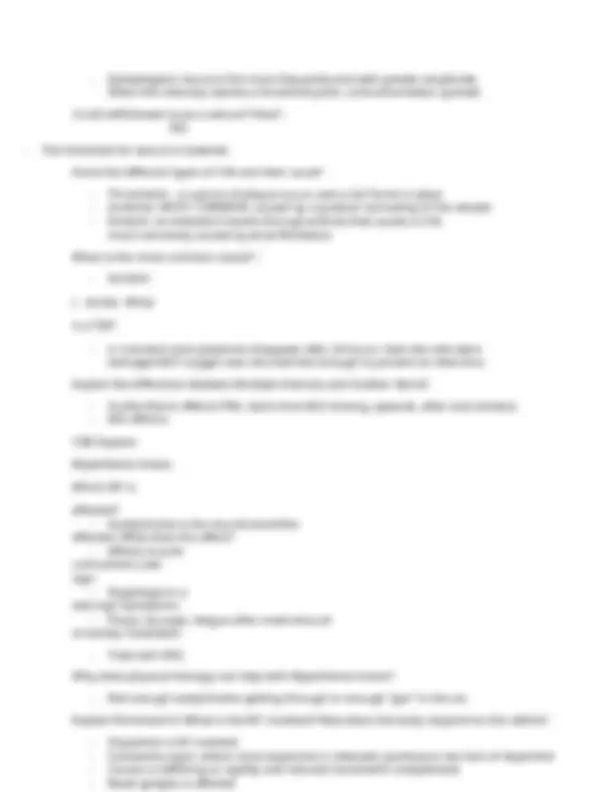

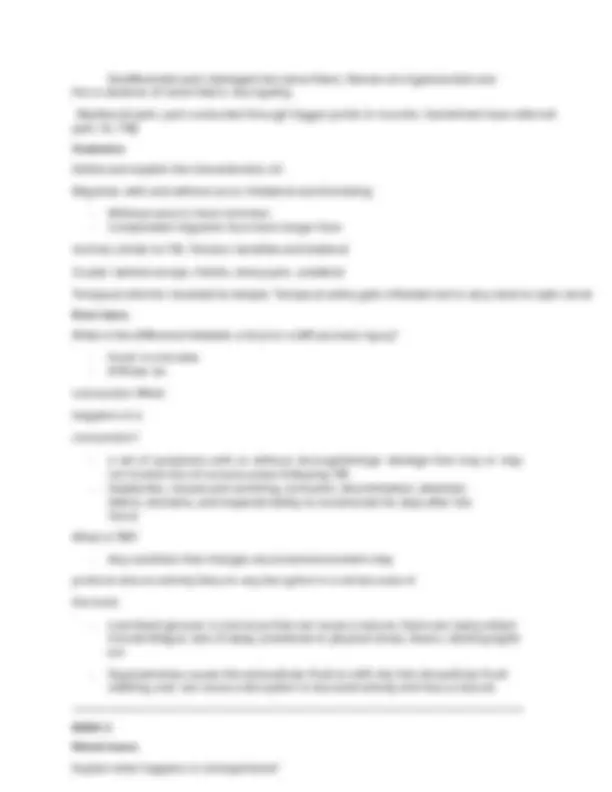

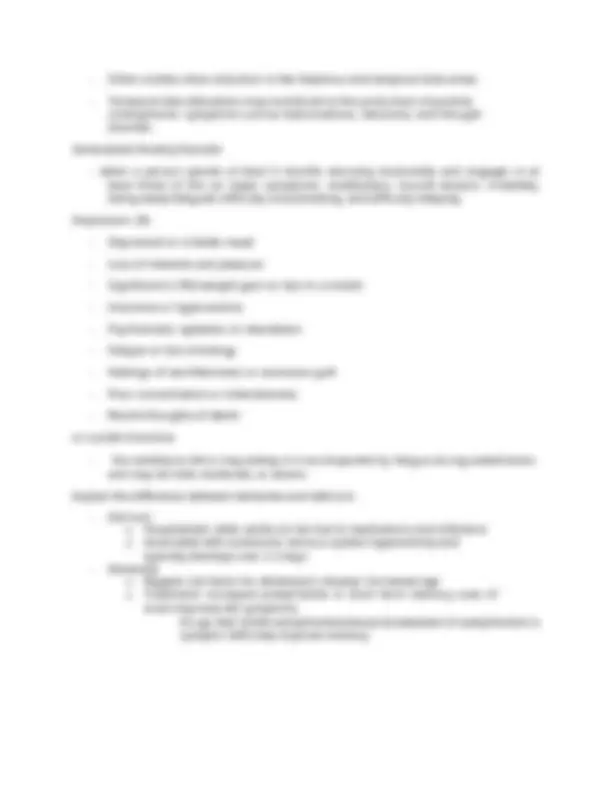
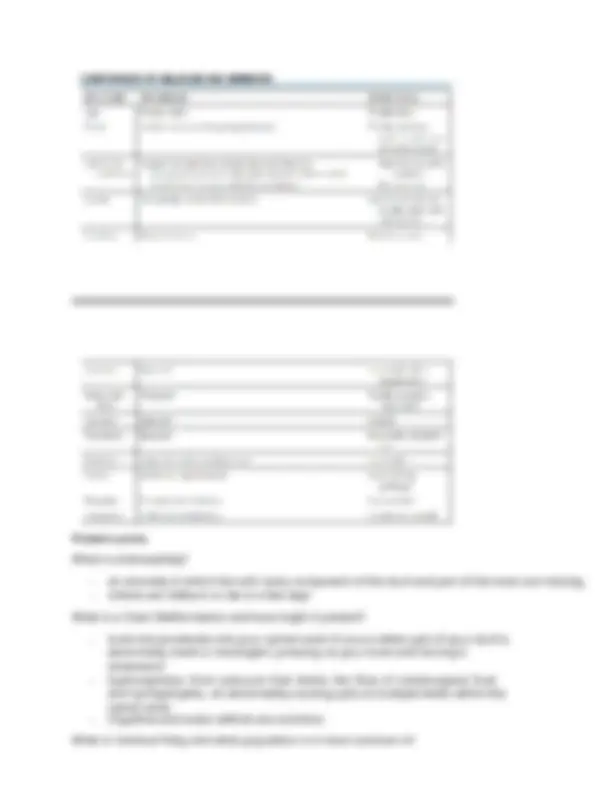

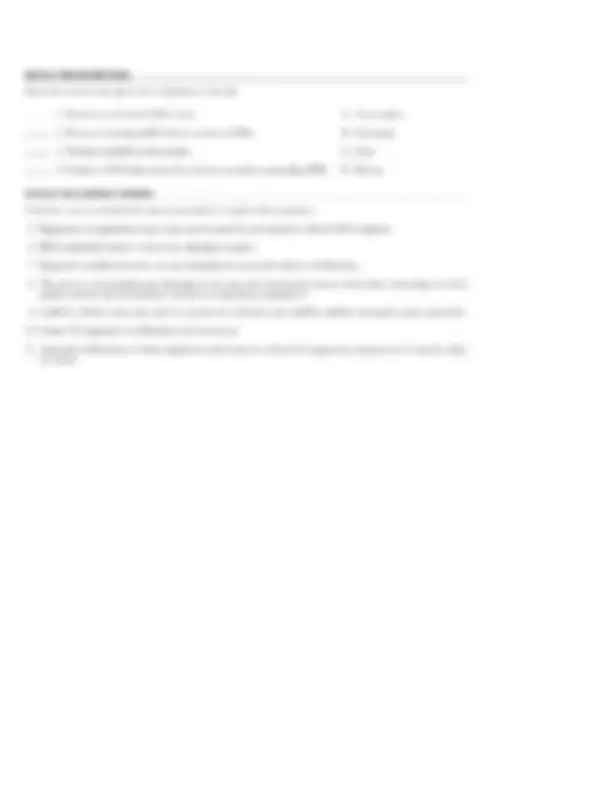


Study with the several resources on Docsity

Earn points by helping other students or get them with a premium plan


Prepare for your exams
Study with the several resources on Docsity

Earn points to download
Earn points by helping other students or get them with a premium plan
Community
Ask the community for help and clear up your study doubts
Discover the best universities in your country according to Docsity users
Free resources
Download our free guides on studying techniques, anxiety management strategies, and thesis advice from Docsity tutors
NURS 611 Advanced Pathophysiology Review Notes
Typology: Study Guides, Projects, Research
1 / 34

This page cannot be seen from the preview
Don't miss anything!



























Multiple choice only Key Points Exam 1: Know Cell components and what they do: ● Nucleus- houses the genetic info ● Ribosomes- responsible for protein synthesis ● Mitochond ri a- Produce ATP ● Golgi apparatus- responsible for packaging and distribution ● Lysosome- degrades and recycles waste ● Peroxisome- has a byproduct of H2O2 which produces free radicals What are Free Radicals or Reactive Oxygen Species? How do they cause damage?
3 types of Cell junctions: ● Describe what Tight junctions are and why we need them? o barriers to diffusion
isotonic solution? NS Give an example of a hypertonic solution? 3% saline What part does albumin do with keeping fluid in blood vessels?
nonuse Hypertrophy increase in cell size Muscle growth from exercise Pathologic from HTN: CHF Hyperplasia increase in NUMBER of cells (^) Liver cell regeneration after surgery; endometrial hyperplasia Metaplasia (^) reversible replacement of one mature cell type by another cell type Barrett’s esophagus Bronchial changes from smoking Is Dysplasia considered a true adaptive process?
o composition of genes at a given locus o Ex. Infant born with inability to metabolize phenylalanine ● What is Phenotype give example? : expression of the gene/disease: ex. PKU: can prevent expression of disease with dietary restriction o outward appearance of an individual, which is the result of both genotype and environment ● DNA has 4 nitrogenous bases what are they? o Guanine, Thymine (RNA Uracil), Cytosine, Adenine ● Mutation: o an inherited alteration of genetic material ● Base Pair substitution also called o mis-sense mutation ● Frameshift mutation: o involves the insertion or deletion of one or more base pairs to the DNA molecule ● What is a Mutagens? Give an example: something that can increase the frequency of mutations o Radiation o Nitrogen mustard ● Which part of the cell can be damaged the most by radiation? o Radiation can fragment the DNA molecule and it can cause chemical reactions that can alter a DNA base
- DNA demethylation, histone modification, and miRNAs What is hypermethylation associated with? Tumorigenesis Pediatric considerations:
What is Downs syndrome? What are typical characteristics?
Ex. of increased capillary membrane permeability. How could you reverse it?
Hypernatremia - BRAIN:
Flattened-T waves;AV Hyperaldosteronism causes which fluid and
What are causes and manifestations of hypokalemia? Bradycardia Paralytic ileus electrolyte imbalances: Hypernatremia Fluid volume excess Calcium: bone, teeth, blood clotting, muscle contraction (heart) (8.6-10.3) CAUSES MANIFESTATIONS Hypocalcemia (<8.5 mg/dl) ● Inadequate intestinal absorption, massive blood administration ● Decreases in PTH and vitamin D levels ● Nutritional deficiencies: ● Malnutrition: o Alkalosis o Elevated calcitonin level o Pancreatitis; o hypoalbuminemia ● Increased neuromuscular excitability ● Tingling, muscle spasms (particularly in hands, feet, and facial muscles) ● Intestinal cramping ● Hyperactive bowel sounds ● Osteoporosis and fractures ● Severe cases show convulsions and tetany ● Prolonged QT interval, ● Cardiac arrest Hypercalcemia (>10-12 mg/dl) ● Hyperparathyroidism ● Bone metastases with calcium resorption from: ● Breast ● Prostate ● Renal ● Cervical cancer ● Sarcoidosis ● Excess vitamin D ● Many tumors that produce PTH ● Calcium-containing antacids ● Many nonspecific ● Fatigue ● Weakness ● Lethargy ● Anorexia ● Nausea ● Constipation ● impaired renal function ● kidney stones ● dysrhythmias ● bradycardia ● cardiac arrest ● bone pain ● osteoporosis ● fractures Phosphate (phosphorous): energy (ATP), 2,3 diphosphoglycerate (2.5-4.5) CAUSES MANIFESTATIONS Hypophosphatemia (<2.0 mg/dl) ● Intestinal malabsorption related to vitamin D deficiency ● Use of magnesium- and aluminum- containing antacids ● Long-term alcohol abuse ● Conditions related to reduced capacity for oxygen transport by red blood cells and disturbed energy metabolism; ● Leukocyte and platelet dysfunction ● Deranged nerve and muscle function